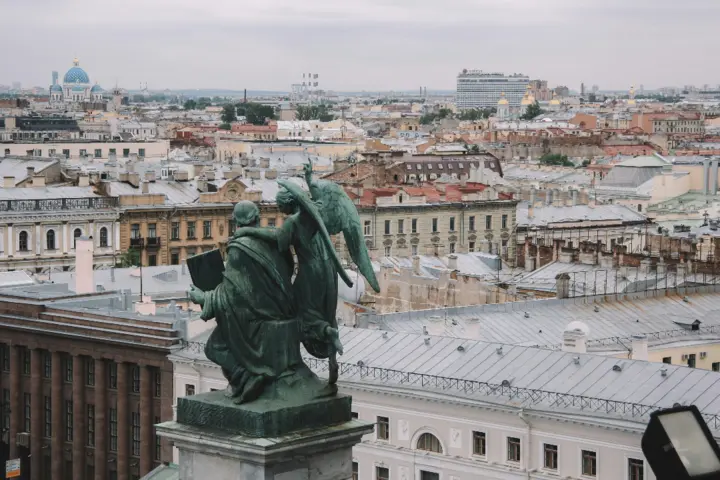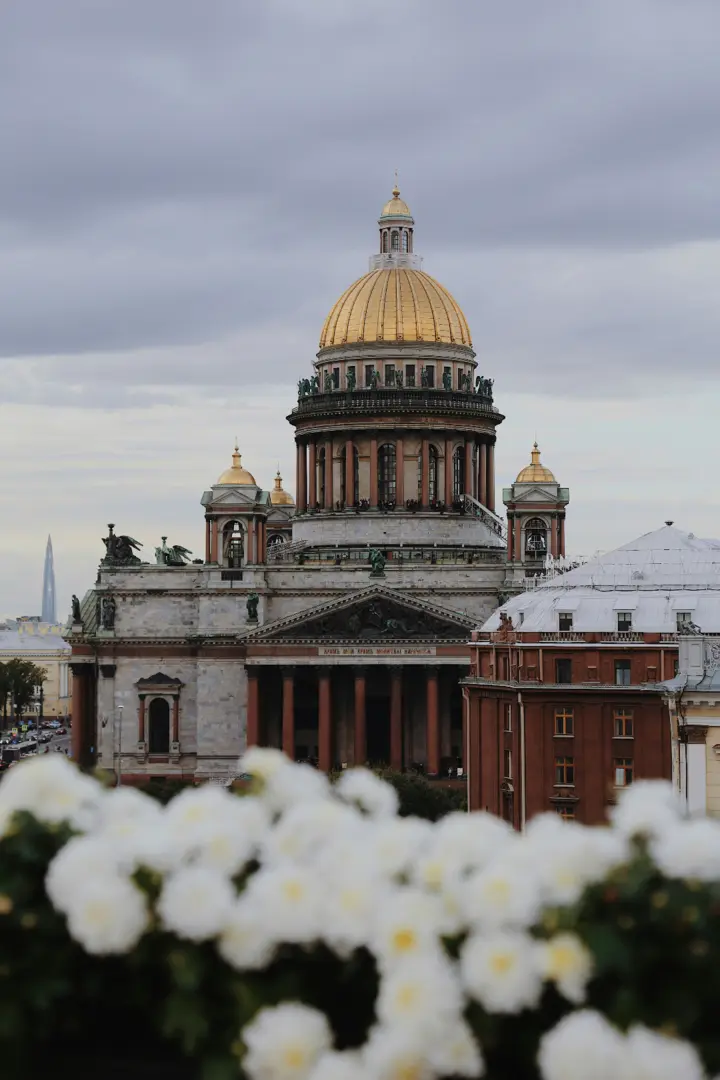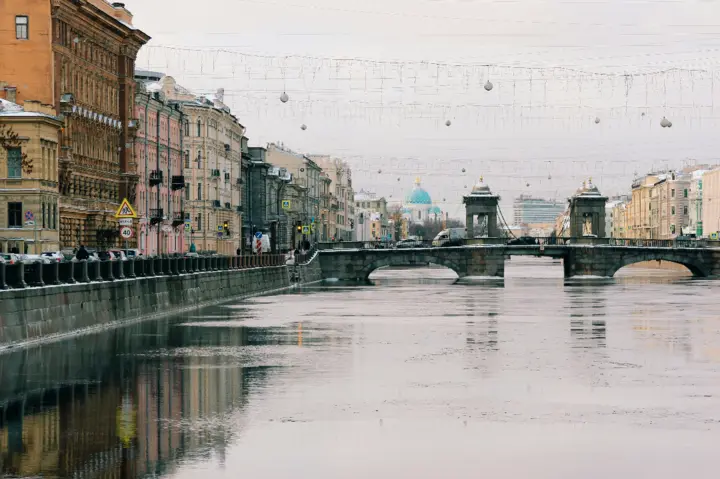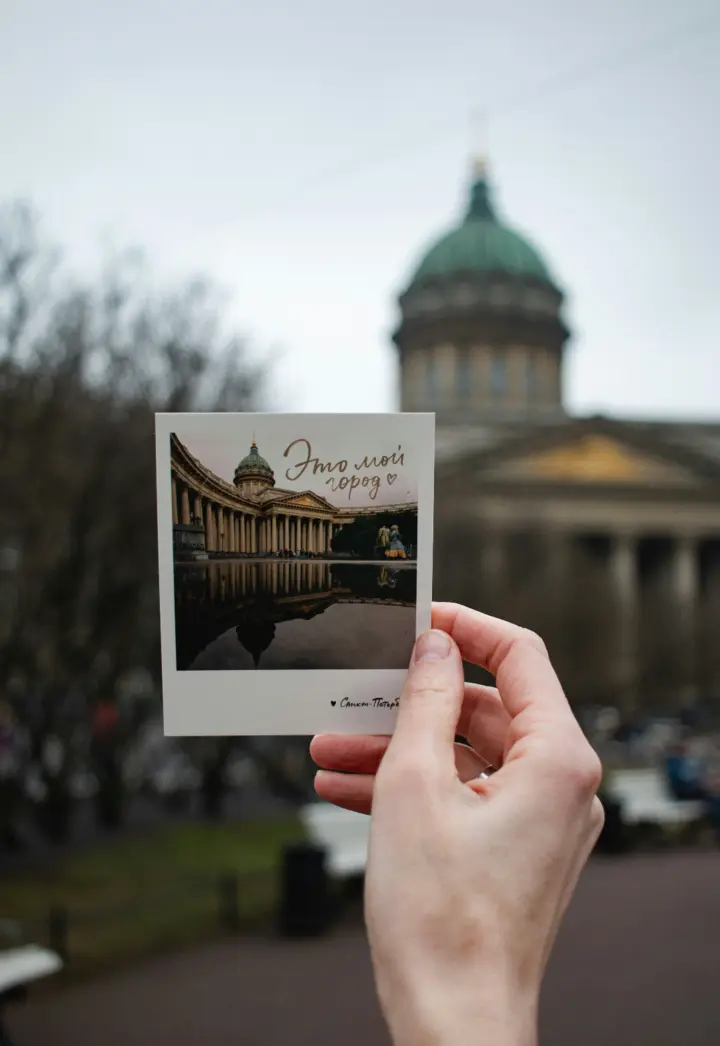St. Petersburg: the jewel of Russian history and culture
St. Petersburg stands tall on the banks of the Neva, telling stories of grandeur, art and revolutions that shaped not only Russia, but the entire world. As a jewel of Russian history and its cultural center, Saint Petersburg is a meeting place for spirits seeking the beauty of architecture, the depth of literature and the richness of heritage. In this article, we travel back in time to discover how this city became the cradle of the arts, a beacon of science, and home to revolutions that reshaped the course of history.
Show key points
- Founded by Peter the Great in 1703, Saint Petersburg was envisioned as Russia's gateway to the West and reflects a fusion of European elegance with Russian essence.
- The city served as the imperial capital for centuries, playing a central role in shaping Russian history and witnessing transformative events like the 1917 Revolution.
- Renamed Leningrad during the Soviet era, it endured the brutal WWII siege with remarkable resilience, becoming a symbol of courage and patriotism.
- ADVERTISEMENT
- St. Petersburg is renowned for its architectural splendor, from grand imperial palaces to iconic churches that display spiritual depth and artistic mastery.
- As a cultural nucleus, the city houses world-class institutions like the Hermitage Museum and the Mariinsky Theatre, preserving and showcasing artistic treasures.
- Contemporary art thrives in Saint Petersburg, blending historical depth with modern creativity, turning it into a dynamic hub for innovation in the arts.
- Through festivals, literature, and vibrant street culture, the city continues to embody and celebrate Russia’s rich traditions and evolving cultural spirit.
Ancient history

Founding of the city: Peter the Great's Window to the West:
In the heart of Russia, St. Petersburg stands out as a witness to the dream of Tsar Peter the Great embodied in its founding in 1703, through which he sought to build bridges of communication with the West and open new horizons for the Russian Empire. The city has been carefully planned to reflect European elegance and sophistication, giving it a unique character that combines authentic Russian spirit with European modernity, which later formed the core of its cultural and political identity.
Recommend
Imperial Age: The Reign of the Caesars and Revolutions:
For centuries, St. Petersburg played a pivotal role as the capital of the Russian Empire and was the center of tsarist power that spread its influence throughout the country. This ancient city has witnessed major events that had a global resonance, most notably the Russian Revolution in 1917, which not only changed the political and social face of Russia, but also profoundly affected the course of world history, making Saint Petersburg the scene of important historical transformations.
Soviet Era: Changes and Transformations:
In a turbulent period of history, St. Petersburg was transformed into Leningrad, in honor of revolutionary leader Vladimir Lenin, opening the door to a series of profound social and political transformations. During World War II, the city faced a formidable challenge in the form of a long and bitter Nazi siege, but it showed legendary resilience, drawing strength from a spirit of resistance and defiance, leaving behind a legacy of courage and endurance that is celebrated to this day.
Architecture and Arts

Palaces and Churches: Testimonies to Imperial Grandeur:
St. Petersburg, with its majestic palaces such as the Winter Palace and the Peterhof Palace, is a landmark of the luxury that surrounded the Russian imperial family. These palaces, with their magnificent architectural designs and delicate artistic decorations, testify to the refined taste and richness that characterized imperial life. Similarly, churches and monasteries, such as St. Isaac's Cathedral and the Church of Spilled Blood, tell stories of faith and spirituality that prevailed in the city, as well as testimonies to architectural creativity that expresses Saint Petersburg's religious and artistic history.
Museums and Theatres: Preserving Arts and Heritage:
The Hermitage, with its spacious corridors and time-telling walls, is one of the greatest bastions of art in the world. This ancient museum is a cornerstone of the preservation of Russian cultural heritage, displaying works of art spanning the ages, and offering visitors a rare opportunity to navigate the sea of human creativity. At the same time, the Mariinsky Theatre is the cradle of the performing arts, contributing to the development and enrichment of Russian and international ballet and opera, delivering performances that captivate and inspire generations.
Contemporary Art: Saint Petersburg Today:
St. Petersburg is witnessing a contemporary artistic renaissance that blends the nobility of the past with the innovation of the present, where deep artistic traditions and modern methods combine to create a unique cultural experience. Inspired by the city's rich history, contemporary artists present works that reflect new and diverse visions displayed in vibrant art galleries, making St. Petersburg a center of creativity that is constantly renewed and reflects the evolving face of Russian culture.
Live Culture

Festivals and celebrations: Ongoing traditions:
St. Petersburg is bustling with vibrant festivals that reflect the authentic Russian spirit, most notably the White Nights festival, which attracts visitors from far and wide to witness the diversity of the arts and the richness of cultural performances. Popular celebrations and national holidays add a touch of glamour to the city, showcasing Russia's rich heritage and reinforcing St. Petersburg's cultural identity, making it a mirror of Russia's rich history and culture.
Music and Literature: Contributions to World Culture:
Saint Petersburg, this ancient city, was not only the cradle of Russian culture, but also a beacon of classical music and world literature. Characters such as Tchaikovsky and Dostoevsky, who lived and excelled in its embrace, influenced world culture with their timeless works. The city continues to reinforce this legacy through literary evenings and concerts, where new talent emerges and maintains a rich artistic tradition, making St. Petersburg a meeting place for artists and art lovers from all over the world.
Everyday life: culture on the streets of St. Petersburg:
The streets of St. Petersburg are vibrant with cultural life with popular markets, literary cafes, and art galleries scattered around every corner. These places are not just gathering and shopping points, but live spaces full of cultural dialogue and showcasing the work of local artists. Daily activities in this ancient city play a vital role in preserving Russian culture, introducing visitors to local customs and traditions, and keeping the authentic spirit of St. Petersburg alive at every moment.
Impact and legacy

Saint Petersburg in Russian memory:
Through the ages, St. Petersburg has been more than just a city; it is the embodiment of the Russian spirit, retaining a special place in the hearts of its people. It has inspired generation after generation of writers and poets, who found in its streets, palaces and rivers music for their poems and colors for their writings. Their works, breathed life through this ancient city, enriched Russian literature and left indelible imprints on the memory of world culture.
Tourism and Economy: The Role of the City in the Modern Era:
Tourism plays a vital role in the economy of St. Petersburg, as it is not only a source of domestic income, but also contributes to the national economy. The city leverages its rich cultural and historical heritage to attract visitors from all over the world, reinforcing its position as a global tourist destination and helping to develop local tourism-related industries.
Heritage Conservation: Challenges and Efforts:
Saint Petersburg faces many challenges in preserving its ancient historical and cultural monuments in light of rapid urban developments. However, efforts are being made to protect this unique heritage, as the city and relevant organizations work to raise awareness of the importance of preserving cultural and architectural heritage, and to develop initiatives that ensure that these treasures continue to connect with future generations.

At the end of our journey through the alleys of St. Petersburg and its rich history, we find ourselves surrounded by an indescribable cultural and historical heritage. From imperial palaces to antique churches, from art-rich museums to theatres that have witnessed the development of ballet and opera, this city stands as a witness to time.
Saint Petersburg, with its charming festivals and great writers, is not only a jewel of Russian history, but also an inexhaustible source of inspiration for world culture. As efforts to preserve this unique heritage continue, the city remains home to souls seeking beauty and knowledge, and always remains a shining jewel in the heart of Russia.








